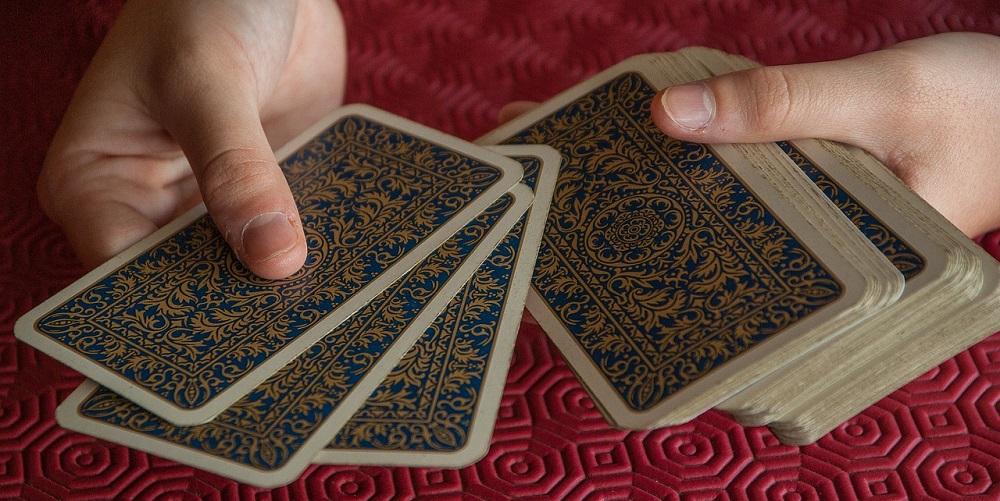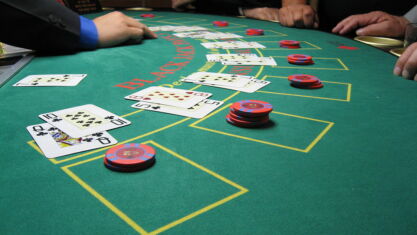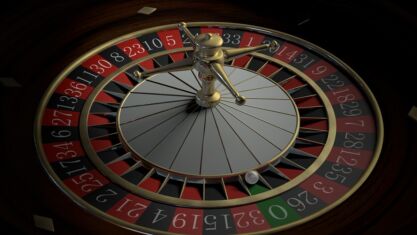In poker, the positions at the table play a crucial role in developing the strategy and outcomes of the game. Hence, you must understand the nuances of the best and worst positions in poker if you want to maximize your advantage and make informed decisions throughout the game.
Breaking down all the positions in poker
The classic poker table typically accommodates nine to ten players, and these individuals assume distinct positions, each with its own strategic implications. The positions are often categorized into three main groups: early position, middle position, and late position. Let’s check them all to learn where to sit at a poker table.
Early Position (EP)
Situated to the left of the big blind, players in early position are the first to act in a betting round. This position requires prudence, as players have limited information about other participants’ intentions. Commonly, early position includes the players in the positions of Under the Gun (UTG) and UTG+1.
Best suited for playing strong starting hands, this position demands a conservative approach. Tight and selective play is recommended, as aggressive betting can leave players vulnerable to unpredictable moves from opponents in later positions.
If you find yourself in the EP at the poker table, a safe bet would be to play with the latest online poker bonuses to minimize risks of losing your own money.

Middle Position (MP)
Following early position, middle position comprises players who act after those in early position but before those in late position. This includes players at positions like UTG+2 and UTG+3.
With a slightly better vantage point than early position, players in middle position have more information but should still exercise caution. A mix of strong hands and speculative plays is advised, depending on the playing style and tendencies of opponents in earlier positions.
Late Position (LP)
Late position, often considered the most advantageous, includes the players on the button (dealer position) and the cutoff. These individuals act last in the betting rounds, allowing them to gauge the actions of opponents before making decisions.
The late position is favorable for playing a wider range of hands, including speculative ones, as players benefit from more information. Aggressive play, such as stealing blinds and making well-timed bluffs, is more viable in late positions.
Looking for more poker winning tips? Learn how to bluff and trick opponents at live poker tables!
The Button
The player on the button, or dealer position, is in the most advantageous spot at the table. They act last in all betting rounds except for the pre-flop, making it easier to control the pace of the game.
The button is an excellent position for playing a diverse range of hands, including weaker ones, and for capitalizing on opponents’ mistakes. Skilled players often leverage the button to maximize their profits.

The Small Blind and Big Blind
Positioned to the left of the button, the small blind and big blind are the forced bets that initiate the betting rounds. These players act early in the first betting round but have the advantage of closing the action in subsequent rounds.
The small blind and big blind positions require careful consideration, as players in these positions invest money without having seen their cards. Strategic blind play involves a balance between defending blinds and avoiding unnecessary risks.
What is the best position in poker?
The button position in poker is widely considered the most advantageous seat at the table. Located directly to the right of the small blind and the dealer position for each hand, it provides a bettors strategic edge for several reasons, including acting last in every betting round and gathering information about opponents’ decisions before making their own. Such a positional advantage grants the button player more flexibility and control over the pot.
Additionally, the button ensures that a player can maximize the potential for steals and take advantage of favorable situations, making it a coveted spot for skilled players aiming to exploit their rivals’ weak sides.
While the best positions in poker are generally considered to be the late ones, a player’s success is also contingent on adaptability and the ability to adjust strategies regardless of his or her place. Learn some poker strategies for beginners that may help you make the right steps towards mastering the game.
















